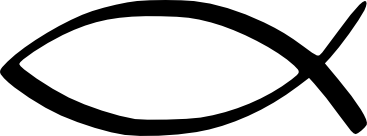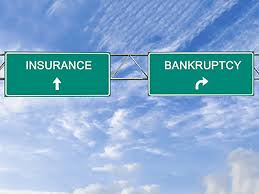Quincy Insurance Consultants
- Menu
- Home
- About
- » About Us
- » Request a Quote
- Insurance Services
- » Business Auto
- » Employment Practice Insurance
- » Workers Compensation
- » Commercial General Liability
- » Restaurant and Banquet Hall
- » Property Insurance
- » Cyber / Professional Liability
- » Auto Repair
- » Hotel & Motel
- » Manufacturing Insurance
- » Medical Offices Insurance
- » Loss Control
- Contact Us
Commercial General Liability Insurance
General Liability Coverage Description
The Commercial General Liability Policy provides the insurance protection needed to pay damages for bodily injury or property damages for which the insured is legally responsible. The policy provides coverage for liability arising from personal injury and advertising injury. Coverage for medial expense is also provided. The policy also covers accidents occurring on the premises or away from premises. Coverage is provided for injury or damages arising out of goods or products made or sold by the named insured. The insured is the named insured and the employees of the named insured. However, several individuals and organizations, other than the named insured, may be covered, depending upon certain circumstances specified in the policy. In addition to the limits, the policy provides supplemental payments for attorney fees, court costs and other expenses associated with a claim or the defense of a liability suit.
There are two commercial general liability coverage forms available, the occurrence form and the claims-made form. Both forms are somewhat identical in the coverages offered. The main difference is in the way claims are handled under the two forms. The occurrence form covers bodily injury or property damage claims that occur during the policy term, regardless of when the claim is reported. The claims-made policy form only covers claims made against the insured during the policy term. A claim made after the policy expires is not covered by a claims-made policy unless the claim is covered by an extended reporting period. The claims-made policy will only have the extended reporting period. The following terms reflect both forms.
General Aggregate
The General Aggregate Limit is the most money the insurer will pay under a certain coverage for all claims occurring during the policy term. Coverage is provided for damages arising out of ownership or occupancy of the insured premises when not maintained in a reasonable manner. This also covers damages arising out of operations performed by the insured business.Products/Completed Operations
Products coverage is provided for damages arising out of products manufactured, sold, handled or distributed by the insured. Completed Operations covers damages occurring after operations have been completed or abandoned, or after an item is installed or built and released for it’s intended purpose.Medical Expense Limit
Medical payments coverage pays medical expenses resulting from bodily injury caused by an accident on premises owned or rented by the insured, or locations next to such property, or when caused by the insured’s operations. These payments are made without regard to the liability of the insured.Fire Damage Limit
The fire damage limit provides coverage for fire damage caused by negligence on the part of the insured to premises rented to the named insured. If a fire occurs because of negligence of the insured and causes damages to property not rented to the insured, coverage would be provided under the occurrence limit.Personal Injury
Personal Injury means injury other than bodily injury. Coverage is provided for injury resulting from offenses such as false arrest, malicious prosecution, detention or imprisonment, the wrongful entry into, wrongful eviction from and other acts of invasion, or rights of private occupancy of a room. Coverage for libel and slander is also provided in the policy.Advertising Injury
This coverage pays for damages done in the course of oral or written advertisement that disparages, libels or slanders a person’s or organization’s goods, products or services. Coverages for these offenses is provided under advertising injury coverage only if they occur during the course of advertising the names insured’s own goods, products or services.Each Occurrence
Each occurrence is considered to be an accident, which could include continuous or repeated exposure to the same harmful conditions. An occurrence can also be a sudden event, or a result of a long term series of events.Claims Made Form Only
Basic Extended Reporting Period (Basic Tail)
This coverage is provided automatically without an additional premium charge is coverage is cancelled, not renewed, or the insurer renews with a later retroactive date. The basic extended reporting period starts at the end of the policy period and last for five years for claims made against the insured within the five year period and reported to the insurer within 60 days after the end of the policy period.Supplemental Extended Reporting Period (Supplemental Tail)
The supplemental extended reporting period is available under the same circumstances as the basic one. However, it becomes effective only if the named insured makes a written request within 60 days after termination of the policy period and the additional premium is paid. The supplemental extended reporting begins when the basic one ends, and it continues forever. It can not be cancelled by the insured or insurer. The supplemental tail endorsement would provide coverage for claims reported to the insurer within sixty days after the end of the policy period but did not result in a claim being made against the insured until after the end of the five year policy period. Other types of occurrences or offenses that are unknown by the insured and therefore not reported within the sixty days after the end of the policy period could also be covered by the supplemental tail. When the tail is purchased the policies general aggregate limit and the products/completed operations aggregate limit is reinstated.Retroactive Date
The retroactive date shown in the policy declarations is the same as the inception date, or the retroactive date can be a date prior to the inception date. A policy can also be written with no retroactive date.
Contact Info:
bptaszek@thedavidagency.com

Office visits by appointment
Bob Ptaszek
The David Agency Insurance
Quincy Insurance ConsultantsOne Lincoln Centre, Suite 100
Oak Brook Terrace, Il. 60181
847-803-0394
847-254-6060 cell

